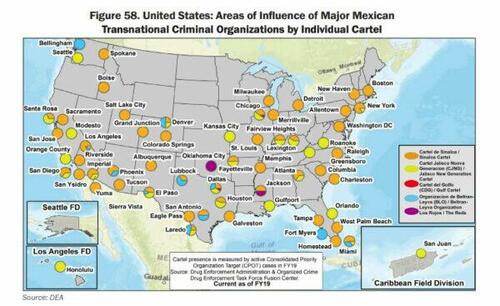TWINCORE researchers describe a mechanism that inhibits virus replication and protects cells from damage. Interestingly, a drug that has already been approved could prove useful in combating various viruses.
AIDS, the flu, COVID-19—time and again, viral infections overtake entire regions of the world and cost human lives. To date, there are no drugs with a broad antiviral effect. Researchers from Hannover want to change that.
In the journal PLOS Pathogens, Prof. Frank Peßler and his team at TWINCORE—Center for Experimental and Clinical Infection Research, a joint venture of the Helmholtz Center for Infection Research and the Hannover Medical School describe a way to effectively inhibit the multiplication of a wide variety of viruses.
For the study that has now been published, the researchers from the Biomarkers for Infectious Diseases working group worked together with teams from the universities in Gießen and Aarhus as well as the Helmholtz Institute for Pharmaceutical Research Saarland (HIPS).
Therapeutic targets in humans
The fact that it is so tricky to fight viruses is partly due to their simple structure. They offer only a few points of attack for inhibiting agents. In addition, they repeatedly change in such a way that active agents no longer recognize their target.
Viruses, which consist of only a few components, use the body's own structures of their host, e.g. humans, for their reproduction. Also because severe effects of a viral infection are often due to an excessive reaction of the body's defense system, researchers are increasingly focusing their attention on the interaction between virus, human physiology and the defense system.
The goal is to find mechanisms in the body that can be therapeutically inhibited or enhanced to slow down a viral infection and alleviate its effects. Researchers led by Frank Peßler have now succeeded in influencing two mechanisms in human cells simultaneously so that both happen.
Correct active substance, but unexpected mechanism
Peßler and his colleagues are researching the body's own molecule itaconic acid. Some time ago, they discovered that a pharmacologically optimized variant of it, 4-octyl itaconate, is particularly efficient in activating a signaling pathway that controls various protective and defense mechanisms of human cells.
The switch for this signaling pathway is a protein called NRF2. However, their experiments repeatedly revealed evidence that 4-octyl itaconate directly impairs virus replication—independently of the NRF2 signaling pathway. To investigate these indications, they produced cells in the laboratory without NRF2 protein.
When the protective switch was missing, influenza viruses actually multiplied better. To their surprise, however, the researchers found that even without NRF2, 4-octyl itaconate inhibited the proliferation of influenza viruses just as strongly as in unmodified cells.
"When we saw the first results of these experiments, we were quite astonished," says Frank Peßler. "We had obviously been studying the right active ingredient all along, but only now got onto the trail of the decisive mechanism of action."
Transport path blocked
Peßler and his colleagues suspected that 4-octyl itaconate obstructed the transport of proteins and nucleic acids from the cell nucleus, which many viruses depend on.
To test their assumption, they compared the effect of 4-octyl itaconate with that of a cancer drug (selinexor) that blocks a transport channel from the cell nucleus. Both the cancer drug and the itaconic acid variant inhibited replication of an influenza virus. They prevented precursors of the newly formed virus particles from being transported out of the nucleus of the host cell. The unfinished viruses remained stuck in the cell nucleus, so to speak.
"We were very surprised how efficiently 4-octyl itaconate directly inhibits the multiplication of influenza viruses by this mechanism," says Peßler. The authors of the current study also provide an explanation for their observation: In the structure of the transport channel, they found a site to which both 4-octyl itaconate and the anticancer drug bind. It is similar to the site where 4-octyl itaconate interacts with the protein that controls the NRF2 switch.
Using biochemical methods, the researchers proved that 4-octyl itaconate actually binds to the nuclear transporter in human cells, thereby blocking it. Peßler and his colleagues also observed this effect with other substances that were previously only known as NRF2 activators.
Potential for broad efficacy
The now published findings open up new perspectives for the development of antiviral therapies. Interestingly, a wide variety of viruses with very different life cycles depend on the export of proteins or nucleic acids from the nucleus.
From the influenza virus, which causes seasonal flu, and SARS-CoV-2 to the respiratory syncytial virus (RSV), which hospitalized numerous infants last winter, to rabies, which is once again more widespread in many Asian and African (travel) countries—they all need the transport channel to replicate. In the case of different viruses, various steps of reproduction depend on the channel. Blocking this pathway therefore promises to counteract many different types of viruses.
Slowing down viruses, protecting cells
Newly emerging viruses could also possibly be slowed down in this way. "The next pandemic is bound to come," says Frank Peßler. "And wouldn't it be nice to have a pill that could help people quickly and curb the spread early—even before we know exactly which virus it is?"
The fact that an inhibitor of the transport channel has already been approved as a drug opens up prospects for a rapid adaptation of therapy to viral infections. However, this drug does not have the cell-protective properties of the NRF2 activators.
Peßler is therefore planning to optimize chemical variants of itaconic acid in such a way that they have equally virus-inhibiting and cell-protecting effects. The fact that itaconic acid occurs in the human naturally gives hope that this will result in drug candidates with as few undesired side effects as possible.
More information: Fakhar H. Waqas et al, NRF2 activators inhibit influenza A virus replication by interfering with nucleo-cytoplasmic export of viral RNPs in an NRF2-independent manner, PLOS Pathogens (2023). DOI: 10.1371/journal.ppat.1011506
https://medicalxpress.com/news/2023-08-mechanism-inhibits-wide-variety-viruses.html
